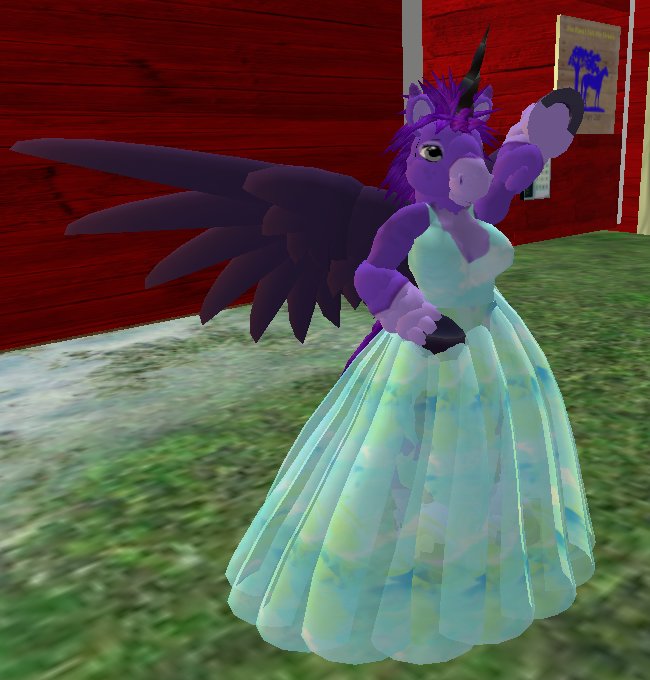Second Life Furries
The following are some fur creatures in Second Life. Fur creatures are known as furries. They range from feline to canine to equine to murine to lupine to leporine to vulpine to ursine to nondescript fur-balls. (for a list of words like feline and canine, see: brutal appellatives.)
Note that these critters are particular that you get their species right. If you addressed a Miss Beaver as a skunk, or took a puss for a bitch, or a husky as coyote, as marsupial for a murine: Good Luck if you want to ask her out. When in doubt, read her profile first. Males, in this aspect, are also like females, they want their identies be understood. For example, it would be a bad start of a friendship, if you take a wookiee as ewok.
This can be understood in real life too. For example, if you are English and the Asian friend you just met remarked something about your nice American culture, you probably are going to correct him quickly.
Many of the following shots are taken at a night club called The Ark, at FurNation Prime 128,38,500, on 2007-01-19. FurNation actually has a website:
http://furnation.com/
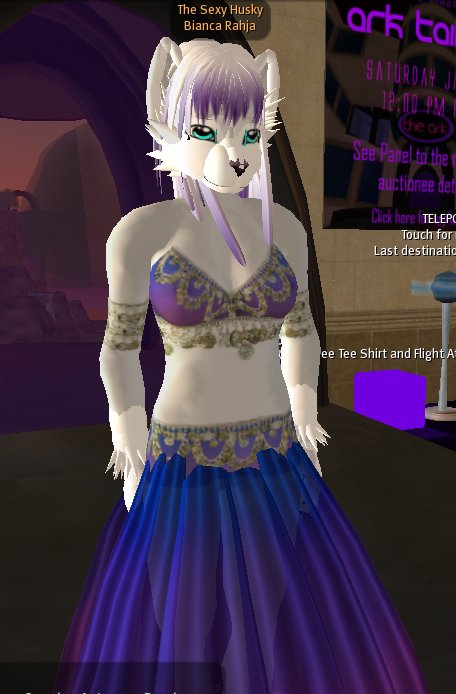
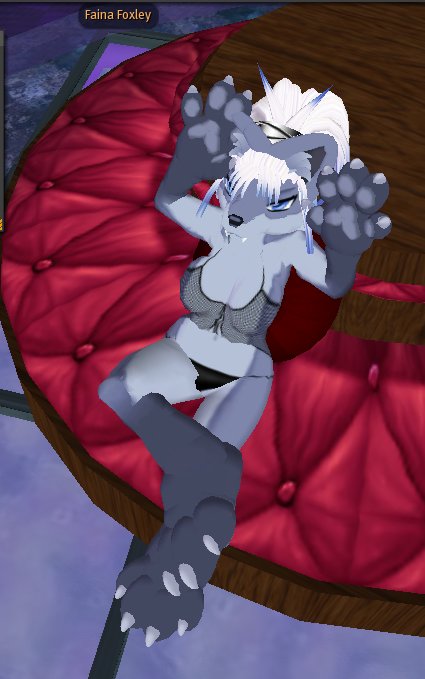
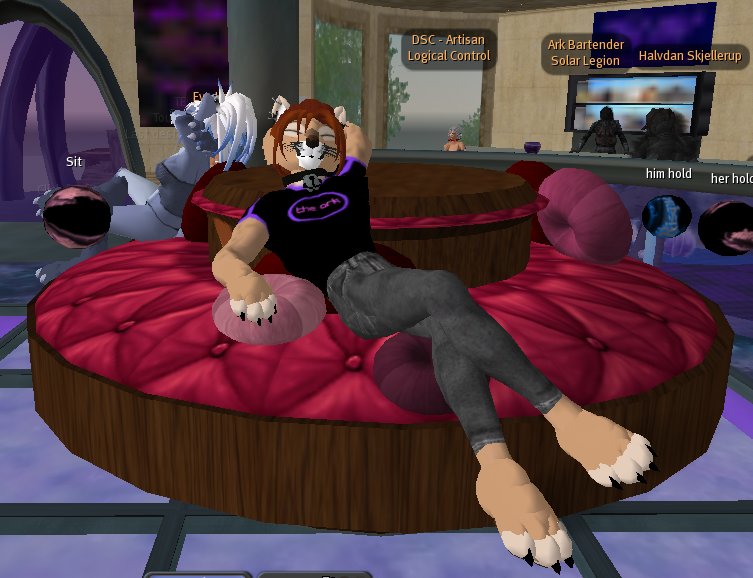
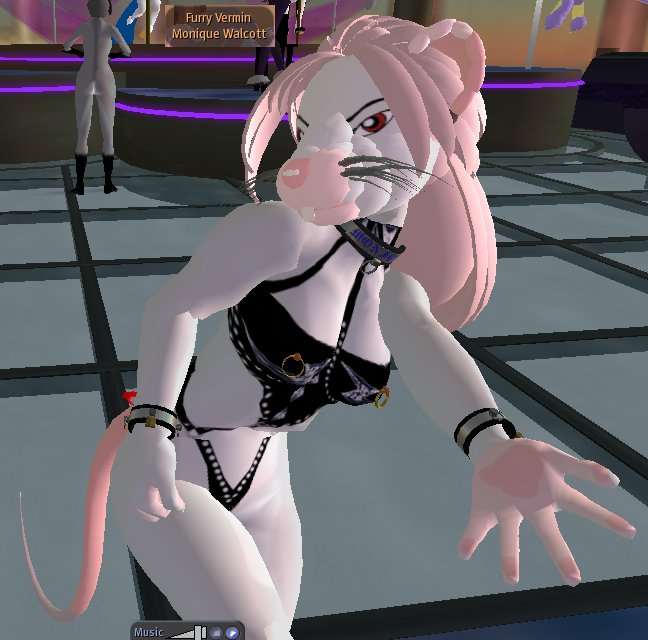
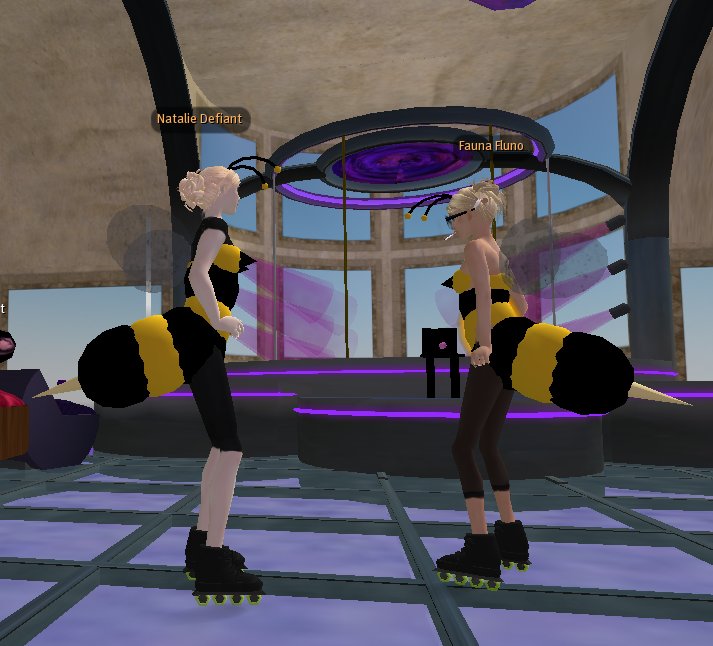
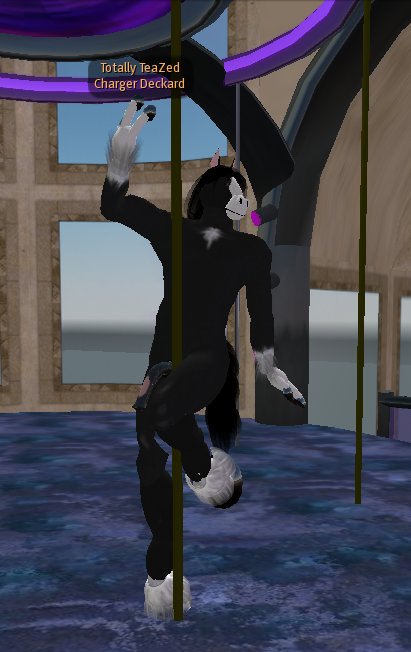
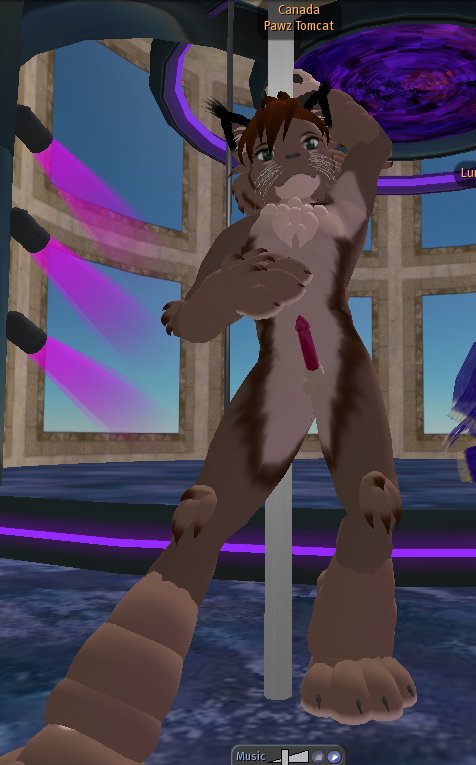
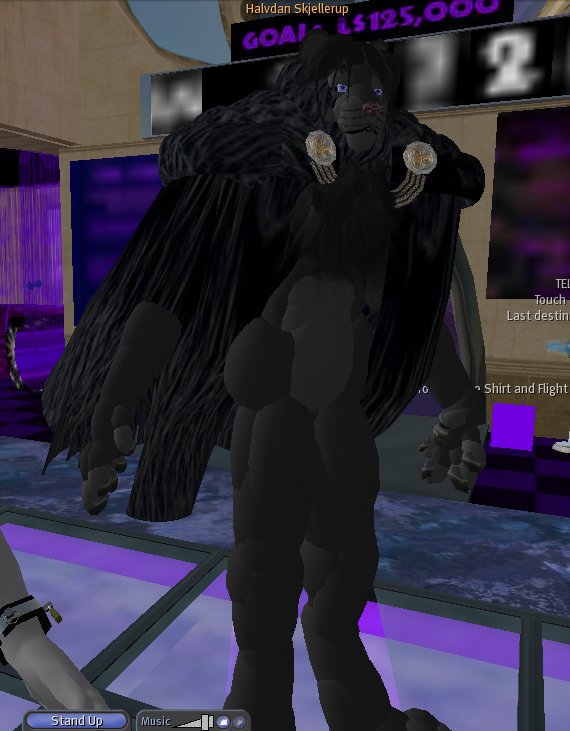
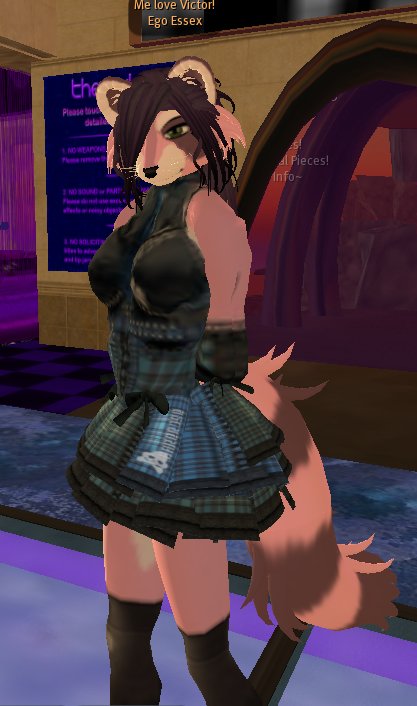
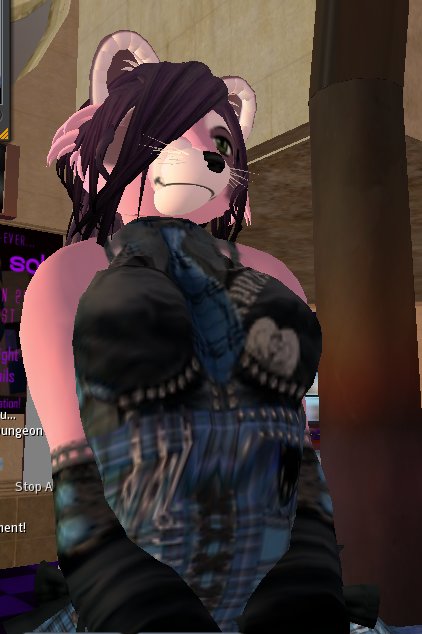
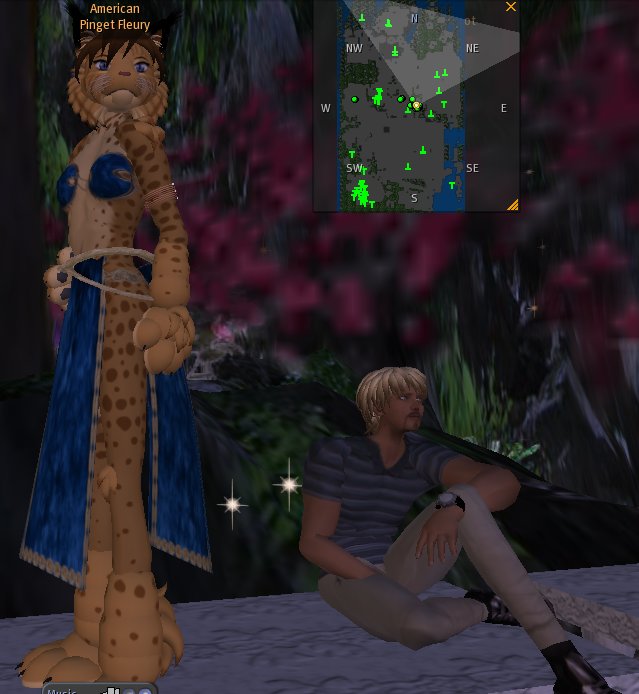
Yes, she's a lynx. Yours truely labeled her a leopard, and got promptly corrected. How can you tell she's a lynx? Note this excerpt from wikipedia: «Lynxes have short tails, and usually a tuft of black hair on the tip of the ears.», and note the tuft of black hair on the tip of her ears in the photo below. To be more specific, she is a Eurasian lynx.
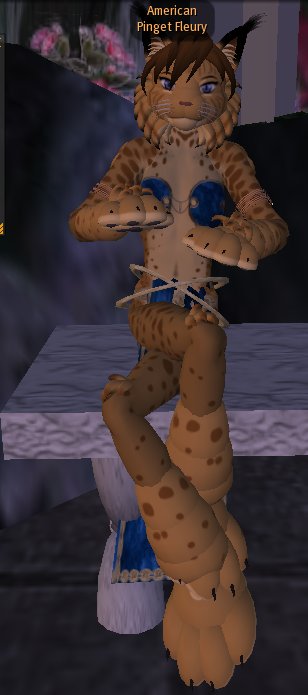
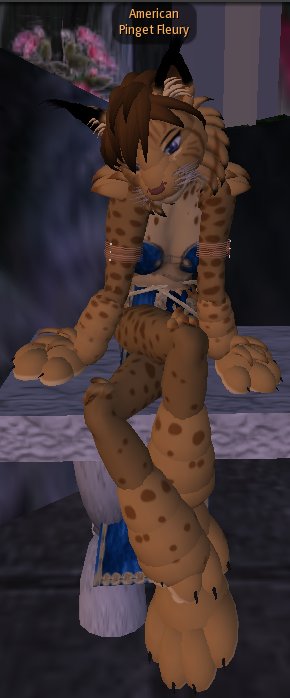
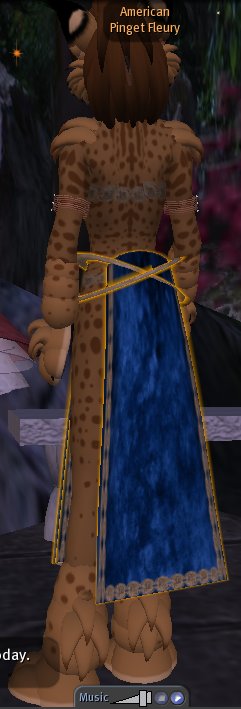
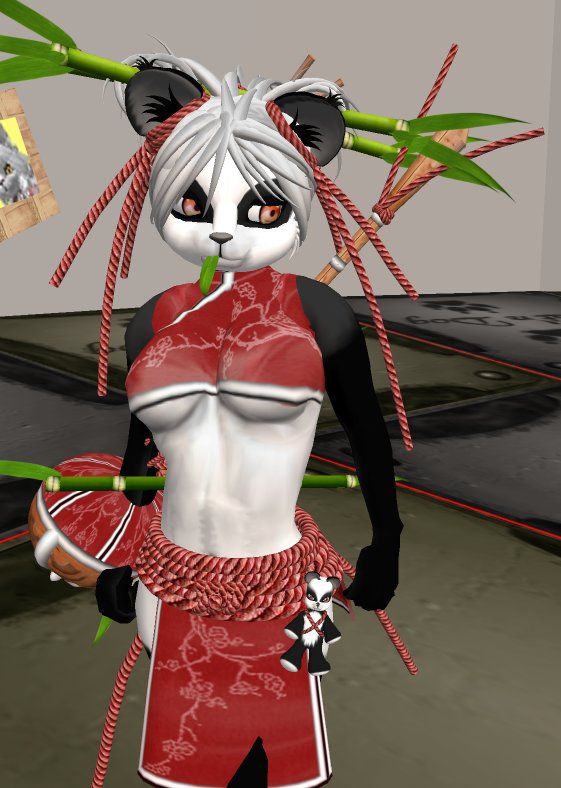
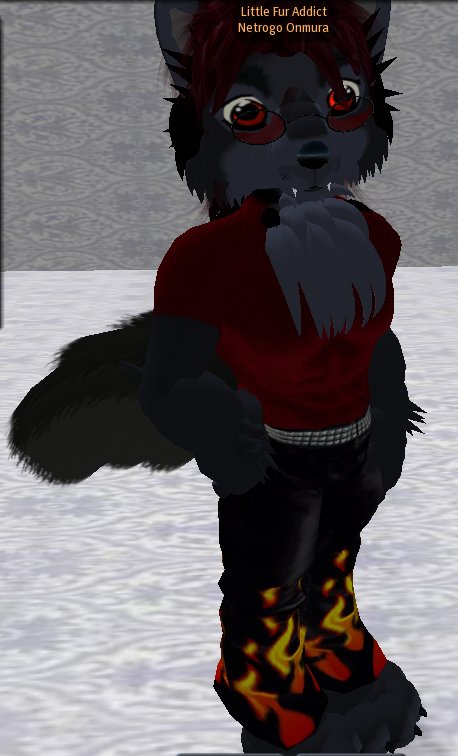
Here's a section from wikipedia on wolf's courtship and mating behavior.
Usually, the instinct to pass on genetic material drives young wolves away from their birth packs, leading them to seek out mates and territories of their own. Dispersals occur at all times during the year, typically involving wolves who reached sexual maturity during the previous breeding season. It takes two such dispersals from two different packs for the process to take place, as dispersing wolves from the same maternal pack tend not to mate.[16] Once two dispersing wolves meet and begin traveling together, they immediately begin the process of seeking out territory, preferentially doing so in time for the next mating season. The bond that forms between such wolves often lasts for the shorter of the two lifetimes, with few exceptions.[17]
During the mating season, breeding wolves become extremely affectionate with one another in anticipation for the female's ovulation cycle. Overall, pack tension rises, as each mature wolf begins to feel the urge to mate. In fact, during this time, the alpha male and alpha female may be forced to aggressively prevent other wolves from mating with each other.[16] Under normal circumstances, a pack can only support one litter per year, so this type of dominance behavior is beneficial in the long run.[16]
When the alpha female goes into estrus—a phenomenon that occurs once per year and lasts 5–14 days,[18]—she and her mate will spend an increased amount of time in seclusion. Pheromones in the female's urine and the swelling of her vulva let the male know when his mate is in heat. She will be unreceptive for the first few days of estrus, during which time she sheds the lining of her uterus. Once the female begins to ovulate, mating occurs.
The male wolf will mount the female firmly from behind. After achieving coitus, the two form a copulatory tie once the male's bulbus glandis— an erectile tissue located near the base of the canine penis— swells and the female's vaginal muscles tighten. Ejaculation is induced by the thrusting of the male's pelvis and the undulation of the female's cervix. The two become physically inseparable for anywhere from 10–30 minutes, during which period the male will ejaculate multiple times.[19][20] After the initial ejaculation, the male may lift one of his legs over the female such that they are standing end-to-end; this is believed to be a defensive measure.[20] The mating ordeal is repeated many times throughout the female's brief ovulation period, which occurs once per year per female, unlike female dogs, with whom estrus usually occurs twice per year.
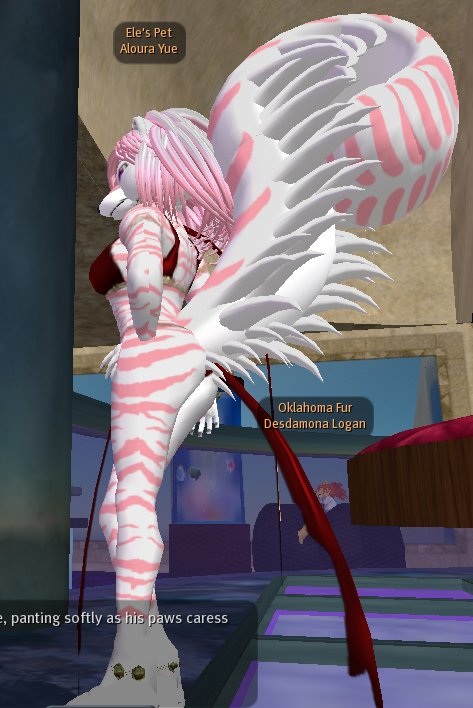
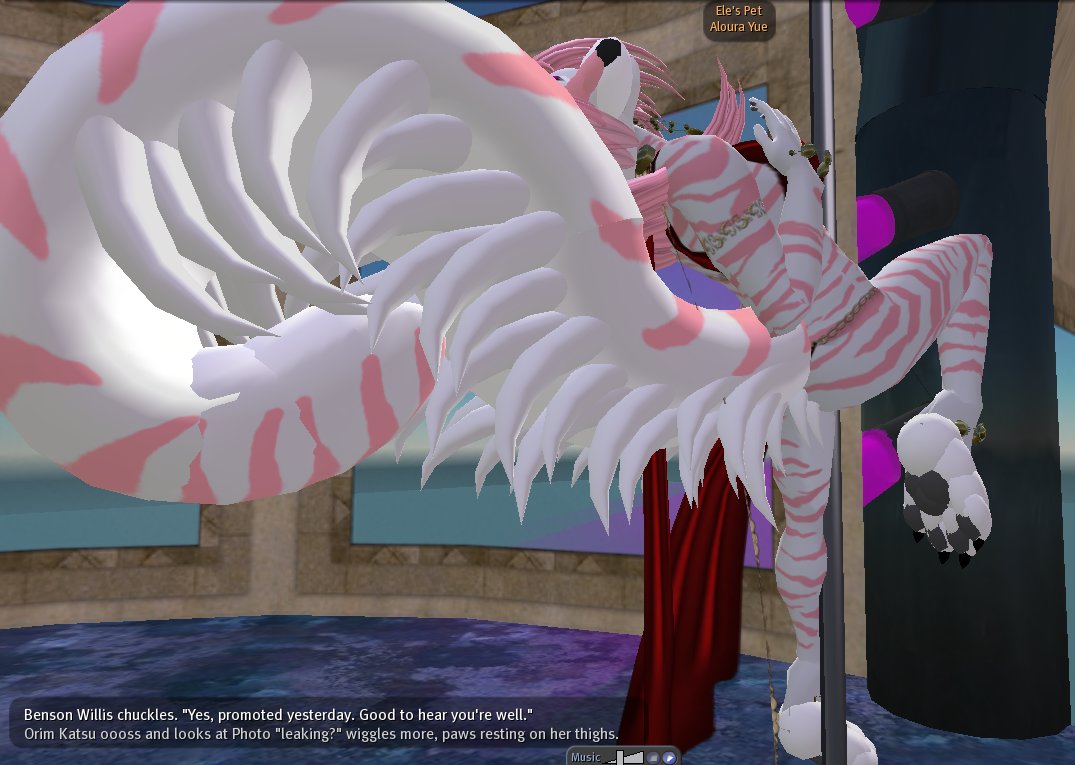
She went onto the stage. Spectacular tail!
Here's a interesting excerpt on skunk reproduction, from wikipedia (skunk):
Breeding usually takes place in early spring. Female skunks are induced ovulators, the male skunk mounts the female from behind and proceeds to bite the female on the back of the neck and back, which induces the female's ovulation. Females excavate a den ready for between one and four young to be born in May. The male plays no part in raising the young and may even kill them. A common scene in late spring and summer is a mother skunk followed by a line of her kits. By late July or early August the young disperse. When the young skunks meet again, they raise their tails vertically. After a little posturing they start to rub against each other, often rolling around in what appears to be an embrace. Older skunks seem less friendly to the young kits.
